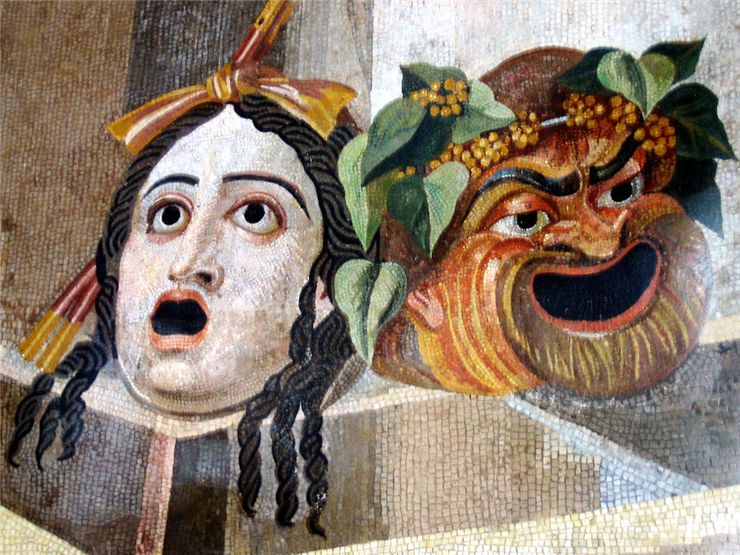Greek Masks - Ancient Greek Theatre Masks
Ancient Greek civilization was responsible for many advances that made our modern civilization possible, but their promotion of many art forms is maybe it’s most recognized and best-remembered feat. The art of stage plays and popularization of the live presentation of stories that are told with style of tragedy, comedy, and satire represent foundation not only for modern theater but many other art forms that have shaped our modern civilization. The masks of Greek theater played an incredibly important role in the development of the theater art form, and are today considered as one of the most iconic conventions of the classical Greek art.
The earliest examples of masks being used in Greece stem from the ancient religious ceremonies of the celebration of various Greek gods, especially deity Dionysus. The masks that were worn during those early ceremonies gain the meaning of “personas”, and the people who wore them were viewed as transformed into being or person they tried to imitate. The physical remains of those masks that were used in ceremonial rites and celebrations were never found in modern times (most likely since they were built from perishable materials, and many were offered to the gods in the altar pyre to the god Dionysus at the end of the ceremonies), but the records of such events were preserved in the imagery of many Athenian vases from as early as 5th century BC. In those images, actors were never shown with masks on their faces, but taking them before the performance or placing them on altars after plays were finished.

Other records say that the earliest masks were used from the time of Aeschylus. The masks were viewed as powerful tools that totally transformed actors into the desired role, with viewers not distinguishing actors from the theatrical character they were depicting (being that of man, female gods or other mythical beings). In the instance of multiple actors of singers wearing identical masks, the viewers viewed all those actors as a singular character. All actors on the Greek stage were men, who had to adapt their appearance with acting postures, costumes, and masks heavily when they played the roles of women and children. The traditional full attire of Greek theater actor consisted of chiton (turnic or robe), chlamys (short cloak), chlaina (overgarment), kothurnus (short lace-up boots), himation (overgarment), peplos (cloak) and prosopon (mask, translated from Greek as “face”). Actors who played significant roles in Tragedy plays wore boots named cothurni that elevated them over other actors.
In addition to that, they were also very useful as disguises, enabling the single actor to switch several masks throughout the single play, thus presenting several distinct characters to the viewers. Most of those early masks had the forms of helmets with face masks, small openings for eyes, smaller mouth (so that actors mouth could not be seen), and ears, all enabling actor to be able to perform freely and to orient themselves during even complicated movement routines. Build materials were on the lighter side, usually made from organic material like linen, animal skin and decorated with fur and other objects. Some historians presented a theory that some masks hid a megafon-like structure behind masks, which enabled performers to elevate the intensity of their voice and reach ears of viewers in larger open amphitheaters. This theory was however never completely proven. Other theories mentioned creation masks that had the internal structure that would work as a resonator, enabling bouncing of sound waves until they exited mask in amplified form, potentially delivering more energy into the performance.

When Athenian engineers and architects started creating very large open-air theaters, the masks that actors wore got a slightly altered designed. Masks got more profound, intense and over-exaggerated facial features and expressions, which was done so that more distant viewers could more easily spot the full look of the characters, easily distinguish multiple actors on stage, and to not spot changes when one actor changed one mask for another. While the famous happy mask of Comedy and sad mask of Tragedy (the muses of those two theater arts were goddesses Thalia and Melphomene) are best known today as the most popular theater masks in Ancient Greece, many custom masks were created for specific plays and for specific characters.

